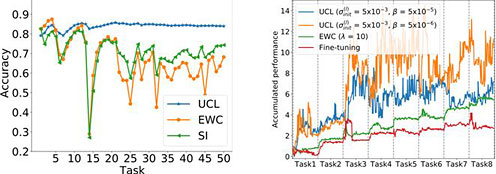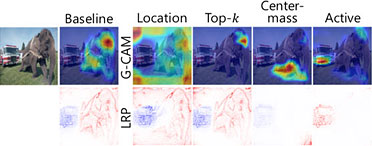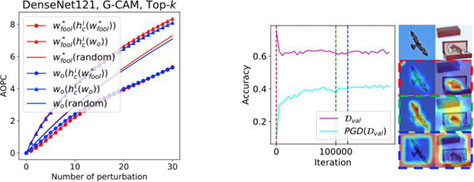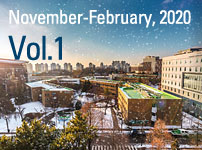SUNGKYUNKWAN UNIVERSITY (SKKU), SEOUL, KOREA
- Prof. Yongtaek Lim's Research Team Develops New Tumor Removal Method
- Prof. Oh-Chae Kwon's Team Suggests Evaluation Method for the Development of Hydric
Propellant - Prof. Hwan Su Yoon's Team Finds New Linker Gene in Mesophilic Red Algae
- Prof. Donghee Son's Team Creates Self-Healable Artificial Semiconducting Polymer Film
- Prof. Keunhyung Kim's Team Develops a Bio-Ink for Cell-Printing
- Prof. Tae Seop Moon's Team Develops Adaptive Life-Long Educational Algorithm and
Finds Vulnerability of Explainable Artificial Intelligence Method

Sungkyunkwan University's Nanoengineering research team announced on October 13th that they have developed a technology that can quickly remove tumors by transforming the microenvironment near the cancer cell. This is done by implanting a transporter that contains an immunomodulation substance. The result of the research was published in the world-renowned journal "Advanced Materials".
The human body has immunocytes that suppress the development of cancer but also other immunocytes that expedite the metastasis of cancer cells. Therefore, immune-oncology is only effective to a limited group of patients.
The research team created a transporter loaded with a chemical anti-cancer drug and immunomodulation substance. They maximized its efficiency by controlling the immunocytes of cancer cells while transmitting just enough anti-cancer drug to the tumor to prevent the excessive use of drug.
The team made a 5~10 mm big transporter in a shape of a pill. The injected the transporter to a rat with breast and cervical cancer to examine the prevention of cancer cell. The group of rats that took the pill survived after the surgery, but rats that only took immuno-oncology died after a month.
Professor Yongtaek LIM said, "We expect to maximize the effect by loading a customized drug after the analysis of immunosuppressive agent of each patient".

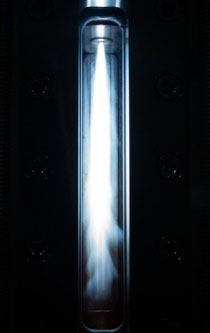 Sungkyunkwan University's research team suggested a method to evaluate combustion stability to develop a hydric rocket engine.
Sungkyunkwan University's research team suggested a method to evaluate combustion stability to develop a hydric rocket engine.
The research paper by professor Oh-Chae KWON's research team has been published in the print version of world renowned journal "Energy".
The team created a propellant feeder that can provide ultralow temperature liquid oxygen (-183 degrees Celsius) and a high-pressure combustor that can reach 60 atmospheres. Using these devices, the team measured the limit of combustion stability of the hydric propellant.
Using the data, they set a standard of stability and designed an evaluation technique for the engine. This method is highly praised for providing a universal standard that can be used in situations with different variables.
This research was conducted as part of the project under the Ministry of ICT and the National Research Foundation of Korea.

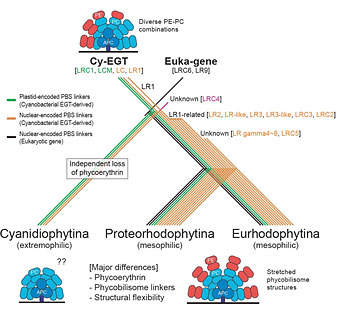 Prof. Hwan Su Yoon's team has found a new phycobilisome linker gene in mesophilic red algae. The research project was supported by the Korean Ministry of Oceans and Fisheries and published in Nature Communications (IF: 11.878) on October 23, 2019. The title of the paper is "Expansion of Phycobilisome Linker Gene Families in Mesophilic Red Algae".
Prof. Hwan Su Yoon's team has found a new phycobilisome linker gene in mesophilic red algae. The research project was supported by the Korean Ministry of Oceans and Fisheries and published in Nature Communications (IF: 11.878) on October 23, 2019. The title of the paper is "Expansion of Phycobilisome Linker Gene Families in Mesophilic Red Algae".
The team found a new phycobilisome linker gene that supports the structural stability of red algae genes. It explains the red algae's method of creating complex phycobilisome structures which was previously unidentified. The research gives significant clues for answering the question of how red algae evolves in various marine environments using the wide light spectrum.

Prof. Donghee Son's team has developed a new polymer film that can self-heal at normal temperatures using a stretchable semiconductor with Prof. Zhenan Bao's team from Stanford University and Prof. Jin Young Oh's team from Kyung Hee University. The new polymer film can sustain its self-healing capability without any external stimulus and is stretchable, which makes the film usable in next-gen artificial electronic skins.
The research was supported by the Samsung Electronics-Stanford University "Global Research Partnership" Project and published in the world-renowned journal, Science Advances (IF: 12.804), on November 8, 2019.
The title of the paper is: "Stretchable Self-Healable Semiconducting Polymer Film for Active-Matrix Strain-Sensing Array". The new stretchable self-healing semiconductor was created through dynamic vulcanization based on a metal coordinate covalent bond between a stretchable self-healable insulating high polymer and an organic semiconductor high polymer. The new semiconductor is highly stretchable (Over 1,300%), and self-healable at normal temperatures.
The internal structure of the stretchable self-healing semiconductor consists of nanite particles that have semiconductor characteristics and surrounding insulating layers. This particular phase separation made the semiconductor highly sensitive to external forces.
"The research products could lead to a new paradigm of flexible semiconductors, and could be used in smart artificial electronic skins that resemble genuine human skin, thus being a cornerstone for robotic technology or prosthetic technology," Donghee Son said.

Prof. Keunhyung Kim's team developed a new bio-manufacturing technology called "bioink" for cell-printing, including living cells. The team also founded the method of arraying living cells in bioink to improve human tissue regeneration.
The team adds gold-nanite particles in collagen based bioink to control the arraying of nanite particles to stimulate cell-growing as well as arraying. With the Cheol Ho Chang's team from Chonnam University, the team also found that the muscular tissue produced with new bioink perfectly regenerated a broad range of damaged muscular tissue.
The team also developed new light-curable bioink based on extracellular matrix in international research exchange with Wake Forest Institution for Regenerative Medicine (WFIRM), and new bioink sufficient for arraying cells by adding synthetic macromolecules Poly (vinyl alcohol) (PVA).
The research was supported by the Korean Ministry of Education, Science, and Technology and published in the world-renowned journals Nano Letters (IF: 12.279) and Biomaterials (IF: 10.273).
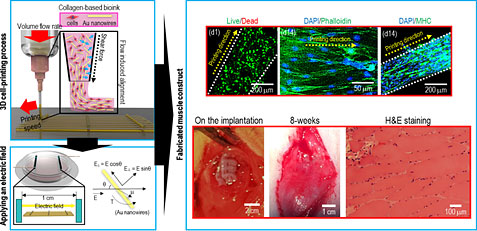
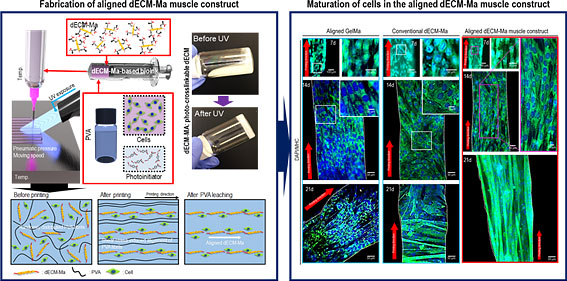
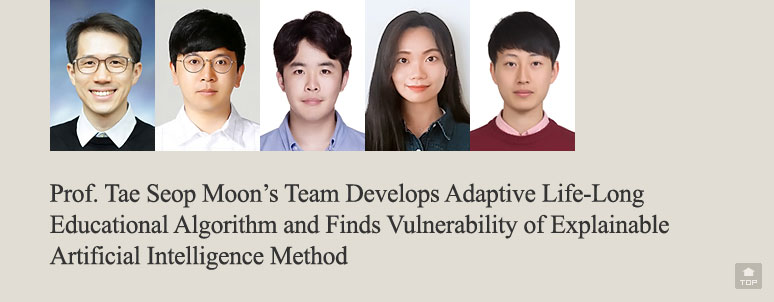
Prof. Moon's team developed an adaptive life-long educational algorithm and discovered the vulnerability of the explainable artificial intelligence method, which are two core technologies in the field of artificial intelligence.
The research was supported by the Korean Ministry of Science and ICT and Korea Institute of Science and Technology. Two articles were published in the world-renowned journal, Neural Information Processing Systems, on December 9, 2019.
The adaptive life-long educational algorithm deals with the continual learning problem, one of the great crux of machine-learning. The research defines the uncertainty of neural network model parameters based on Bayesian online learning, suggesting a new adaptive learning algorithm method that is 30% more efficient regarding the usage of memory compared to the existing method.
The investigation of the vulnerability of the explainable artificial intelligence method suggests a deep-learning interpretation method based on a saliency-map, which was recently used to explain how to predict a deep-learning algorithm that might be vulnerable in adversarial model manipulating. The interpretation methods based on a saliency-map has been useful for detecting the inclination of deep-learning models, but the research suggested the possibility of an entirely different interpretation when adversarial model manipulation was applied.

